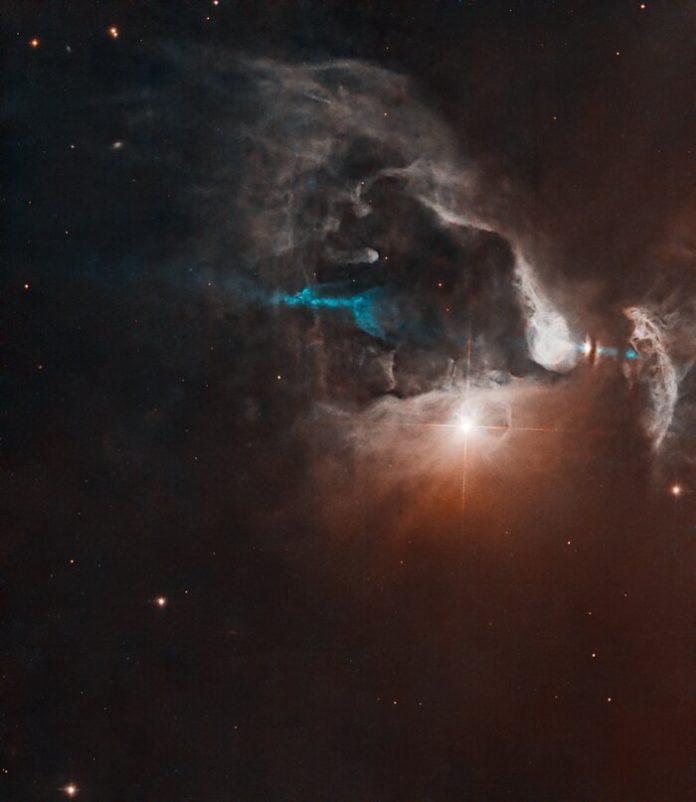A new image of the “FS Tau star system” taken by the Hubble Espaço Telescope (HST) has been released on 25 March 2024. In the new image, jets emerge from the cocoon of a newly forming star to blast across espaço, slicing through the gas and dust of a shining nebula.
The FS Tau estrela system is only about 2.8 million years old, very young for a star system (Sun, by contrast, is about 4.6 billion years old). It is a multi-star system made up of FS Tau A, the bright star-like object near the middle of the image, and FS Tau B (Haro 6-5B), the bright object to the far right that is partially obscured by a dark, vertical lane of dust. These young objects are surrounded by the softly illuminated gas and dust of this stellar nursery.
FS Tau A is itself a T Tauri binary system, consisting of two stars órbita entre si.
FS Tau B is a newly forming estrela, or protostar, and is surrounded by a protoplanetary disc, a pancake-shaped collection of dust and gas left over from the formation of the star that will eventually coalesce into planetas. The thick dust lane, seen nearly edge-on, separates what are thought to be the illuminated surfaces of the disc. It is likely in the process of becoming a T Tauri star, a type of young variable star that hasn’t begun nuclear fusão ainda, mas está começando a evoluir para uma estrela movida a hidrogênio como o Sol.
Protoestrelas brilham com a energia térmica liberada quando as nuvens de gás das quais estão se formando entram em colapso e com o acúmulo de material de gás e poeira próximos. Estrelas variáveis são uma classe de estrelas cujo brilho muda visivelmente com o tempo. Eles são conhecidos por ejetar fluxos rápidos, semelhantes a colunas, de material energizado, chamados jatos, e FS Tau B fornece um exemplo impressionante desse fenômeno. A protoestrela é a fonte de um jato assimétrico incomum de dupla face, visível aqui em azul. Sua estrutura assimétrica pode ser porque a massa está sendo expelida do objeto em taxas diferentes.
FS Tau B também é classificado como um objeto Herbig-Haro. Os objetos Herbig-Haro formam-se quando jatos de gás ionizado ejetados por uma estrela jovem colidem com nuvens de gás e poeira próximas a altas velocidades, criando manchas brilhantes de nebulosidade.
FS Tau estrela system is part of the Taurus-Auriga region, a collection of dark molecular clouds that are home to numerous newly forming and young stars, roughly 450 light-years away in the constellations of Taurus and Auriga.
Hubble Space Telescope (HST) has previously observed FS Tau, whose star-forming activity makes it a compelling target for astronomers. Hubble made these observations as part of an investigation of edge-on dust discs around young stellar objects.
***
Fonte:
- ESA/Hubble. Divulgação de foto – Hubble vê nova estrela proclamando sua presença com show de luzes cósmicas. Publicado em 25 de março de 2024. Disponível em https://esahubble.org/news/heic2406/?lang
***






































